
Students will work independently to review short a CVC words.
- Subject:
- ESL
- English
- Reading
- Special Education
- Material Type:
- Assessment
- Homework/Assignment
- Author:
- Ashley Bash
- Date Added:
- 08/01/2022

Students will work independently to review short a CVC words.
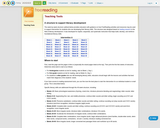
The week-by-week structure outlined below provides educators with guidance on how FreeReading activities and resources may be used to support intervention for students who are developing their literacy skills. This structure was designed based on leading research in the field of literacy development. It was developed for explicit, sequential, and systematic instruction that helps build, develop, and reinforce foundational literacy skills.

Sequence Cardiovascular Exercises is a cross-curricular lesson designed by an Elementary Health and PE teacher to support Math and English instruction. Created By: Steve Ellison Powhatan County Public Schools

Picasso vs Van Gogh lesson is a cross-curricular lesson designed by an Elementary Art teacher to support Math instruction. Created By: Heather Kunks Powhatan County Public Schools.
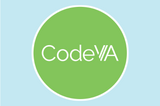
Students will identify the characters, setting, and sequential events of a story and draw a picture summary including the main points and eliminating extra details. Abstraction is the act of eliminating extra information, so students will try to include only the bare essentials to tell the story elements. The teacher will assist them in finding elements that are important to include and students will work in groups of 3 to tell the beginning, middle, and end in a pictorial representation.These materials were created by CodeVA in partnership with George Mason University and were funded by the National Science Foundation under Grant Award #1837380

This video is part of the Learn and Grow with WHRO TV series. Watch Haley Cooprider teach about authors, illustrators, print, picures, words, syllables, and sentences.

In this unit, students grapple with common second grade themes through reading the easily relatable series Pinky and Rex. Through connecting with Pinky and Rex, students will learn that it's okay to be different and to be proud of who they are, no matter what others may think. Students will also learn about what it truly means to be a good friend and how friends can support and stick up for one another in a variety of ways. They will also see that it's okay for boys and girls to be friends, even best friends. This unit builds onto multiple units from first grade in which students learned what it means to be a good friend and a good person. It is our hope that this unit deepens the understandings developed in previous grades by giving students characters to connect with. These connections are especially important for students who are struggling with some of the same issues and aren't sure how to process or talk about them.
In reading this unit is a transition from units that were predominately read aloud into a unit that is almost entirely shared or independent reading. Pinky and Rex are perfect texts for second graders, not only because of the important themes they teach but because of the way in which James Howe develops character and plot over the course of the series. As readers, students will be challenged to notice the descriptive details James Howe includes to show how characters feel in response to different problems and challenges. They will also be challenged to notice how a character's dialogue shows what they are truly feeling and how the different'said' words James Howe includes deepens that understanding. Students will also begin to analyze why certain words in a text are written in italics and what that shows about how a character is feeling. This deep dive into character will allow students to truly understand the characters and the lessons that they are learning. By reading four books in the series, students will also have the chance to see how characters develop over the course of multiple texts. By the fourth text, students will have a deeper, more nuanced understanding of all three characters.

This guided reading of Edgar Allan Poe’s “The Pit and the Pendulum” (1842) focuses on expanding vocabulary, developing student understanding of imagery and other figurative language, strengthening reading comprehension, and strengthening writing skills.

In almost everything we do we follow directions in order to complete a task. Following a set of step by step directions show our ability to create and read algorithms. Whether the directions are quick and easy to follow/ remember or involve more steps and require us to practice them for a period of time, almost everything has them. In this unplugged Computer Science, English lesson students will practice creating sequential events necessary to complete an algorithm that aligns to a simple task- making a pizza!

English Instructional Plan – Plagiarism 6-8

The students will learn about plagiarism, identify plagiarism, and the importance of giving credit for using others' work.
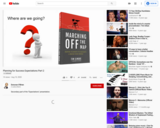
Donovan O'Brien of Culpeper provides this video recording of the second part of a lesson on the Blended and Remote Learning Models, which covers expectations.
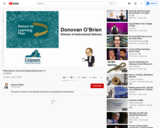
Donovan O'Brien of Culpeper provides this video recording of the first part of a lesson on the Blended and Remote Learning Models, which covers expectations.
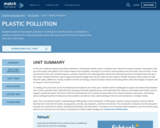
In this unit, students explore how plastic pollution is choking the world's oceans. Students learn about the history of plastic, how plastic ends up in the ocean, how plastic in the ocean impacts the ecosystem, and why it's so hard to remove plastic from the ocean once it's there. In the second half of the unit, students explore a variety of solutions for reducing plastic waste and reducing the amount of plastic that ends up in the ocean. Students will learn about large policy-based changes that can be made and also explore smaller voluntary actions they can take that will make a difference. Finally, students end the unit doing a research project aimed at educating others about the dangers of plastic and its impact on the environment.
In reading, this unit serves as the foundational informational unit of the year. Students will be challenged to explain the relationship between two or more scientific ideas, determine the meaning of domain-specific words, and understand the reasons and evidence the author uses to support a particular point. Since this is the first informational unit, routines and procedures for active annotation, discussion, and writing about reading should be introduced so that students are able to show understanding of the text and standards in multiple modes.

English Instructional Plan – Elements of Plot 6-8

English Instructional Plan Plot and Characterization -7
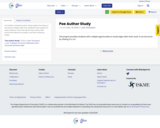
An student-centered author study project focusing on the works of Edgar Allen Poe. Students have options to read, research, and write about Poe's works, their social and historical contexts, and Poe's influence today.
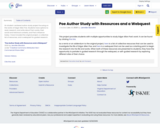
An student-centered author study project focusing on the works of Edgar Allen Poe. Students have options to read, research, and write about Poe's works, their social and historical contexts, and Poe's influence today. I have included the original project, a collective list of resources, and a webquest for guided research.

Want to learn more about how to use the Poe Museum's collection? Watch this short webinar to find out more!

Learning Objectives: Analyze primary and secondary sources to construct a biography and context for an author's writing. Identify text-based examples of craft, perspective, and other literary elements. Construct a position on whether materials outside of the texts, such as biographies and letters, should influence the way readers understand Poe's texts (and, by implication, any artist's work). Original lesson: https://goopenva.org/courseware/lesson/106/overview